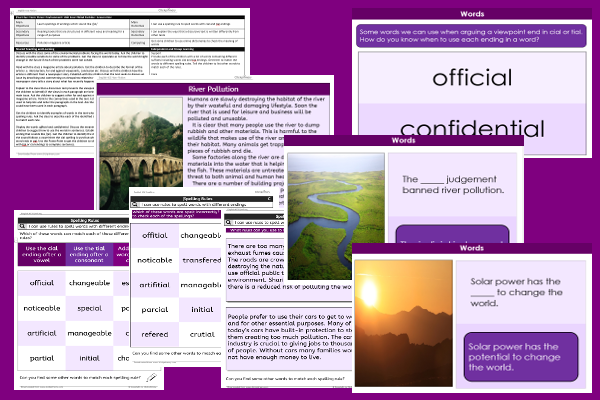Lesson One – Spelling Rules

This English teaching pack for Key Stage Two gets the children to learn and use rules to spell some different words with cial and tial suffix endings to utilise when discussing environmental issues that can affect the world.
The class can explain some of the ways that a discursive text about an environmental topic is written differently from other texts when presenting viewpoints about an issue.
Download this teaching pack including a lesson plan, classroom activities and an interactive presentation to learn and use rules to spell some different words with cial and tial suffix endings to utilise when discussing environmental issues that can affect the world
Activities in this teaching pack include a shared reading text to identify and explain ways that a discursive text about an environmental issue concerning river pollution is written differently from other texts and a set of differentiated worksheets to identify and match the correct spelling of words ending in cial and tial that follow different rules.
The interactive presentation gets the children to explore and use rules to spell different words with cial and tial endings to utilise when discussing environmental issues.
This lesson is part of an English scheme of work to get the children to plan and write a magazine article about an environmental issue, learn rules to spell words with cial and tial endings and use commas to separate phrases and clauses in a sentence. There are teaching activities for shared learning, differentiated worksheets to support independent learning and interactive presentations to introduce concepts and key skills.
-

Theme Park Visit
Practise identifying and calculating the timing and duration of rides and events when visiting a theme park on a special family trip
-

Family Holiday Trips
Identify and record how to compose and publish recounts using adverbials of time and place to describe family holidays to different places in the world
-

Money Multiplication
Explain and model how to use standard written calculation methods to multiply money amounts in pounds and pence when solving number problems
-

Sport Teams
Explain and model how to use brackets and dashes to add extra information to sentences describing how to play sports and games as part of a team
